The way React Native works is that each component available in React Native maps to a native component in the underlying platform.
ie. a <Image /> is an ImageView in Android and a UIImageView.h in iOS.
The Javascript code itself runs in a Javascript thread on each platform and as you use Components in React Native, there's a translation layer that passes information from JS into the React Native bridge that then results in corresponding native components being created.
By default, React Native has included the following components: https://facebook.github.io/react-native/docs/components-and-apis.html#basic-components which means that only those components come out-of-the-box in React Native. If you want other components, then you have 2 options, either create a "composite" component in which your JS component is written into other JS components or, if your feature needs a native component not yet exposed by React Native, write your own "native" component to expose certain native functionality to your React Native code.
The way Expo works is that they have wrapped React Native and a handful of 3rd party components and built it within their application. The reason why you can't use a 3rd party native component they don't support is because when that component is used, the app itself doesn't have translation code to go from JS to a native Android/iOS view.
So, to do what you're asking, you'd need to find either a "native" drawing component that Expo has included in their platform/app. OR you need to find a "composite" drawing component that is built with other default React Native components (or other components Expo supports).
ie. On Android, I might build this with a Canvas view, but from what I can tell React Native doesn't support that object natively, so I would probably write this myself, etc.
It's hard for Expo to support every 3rd party "native" component out there because React Native is open source and it iterates so fast that most community-built components aren't always up to date or they might conflict with one another.
